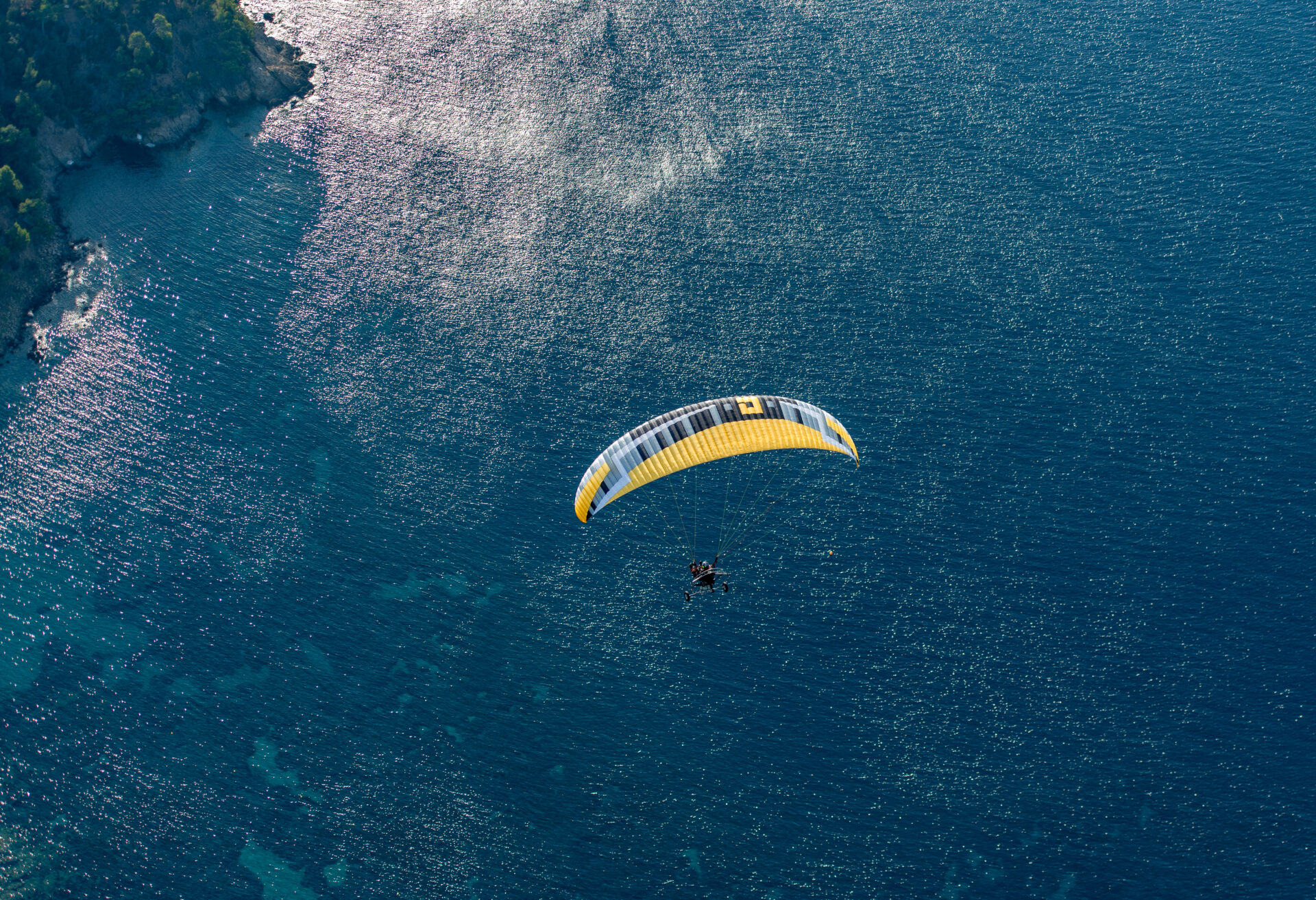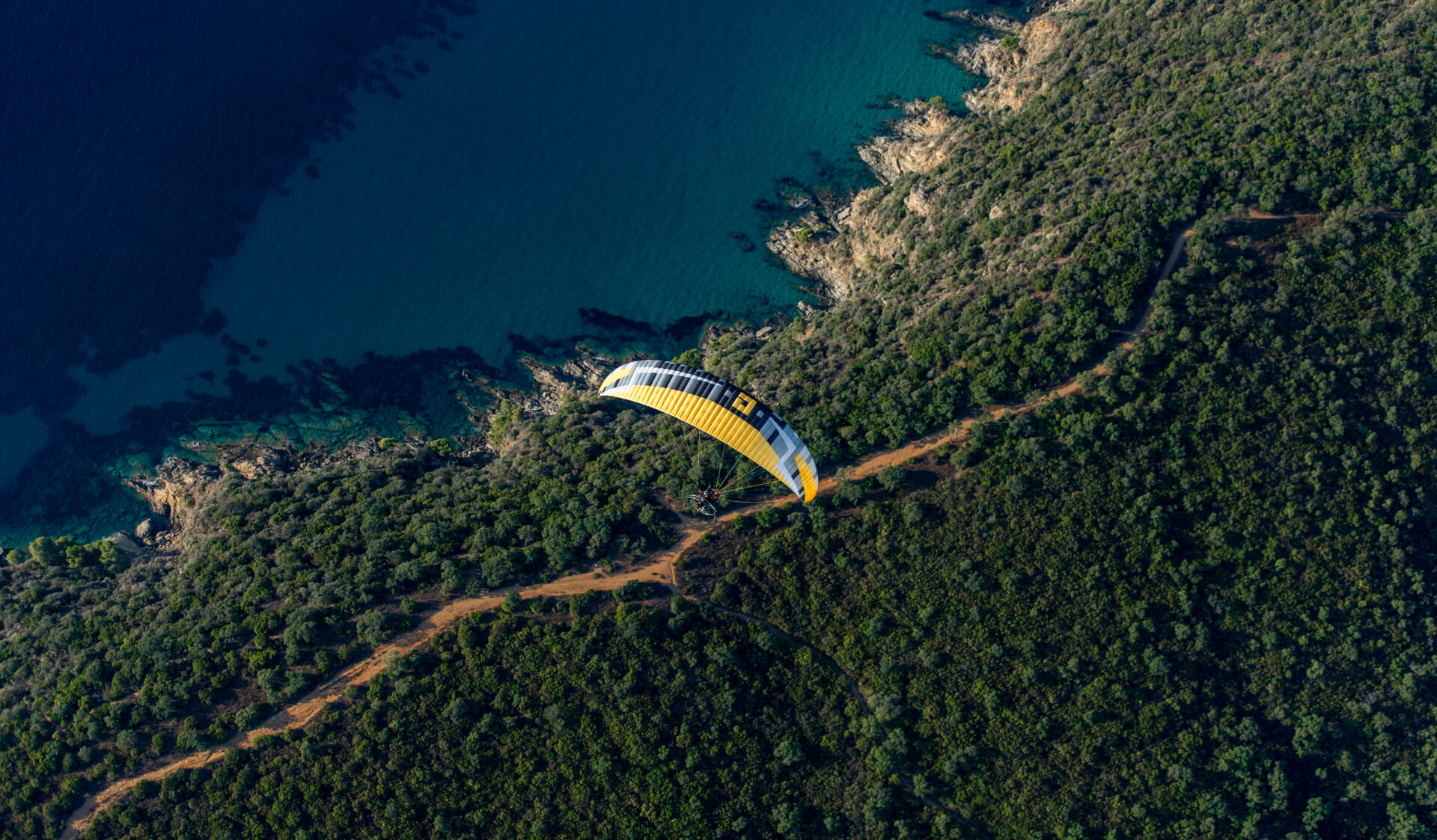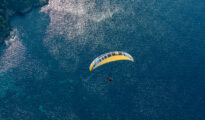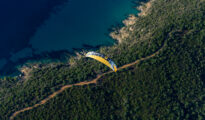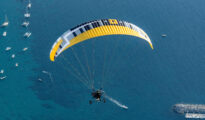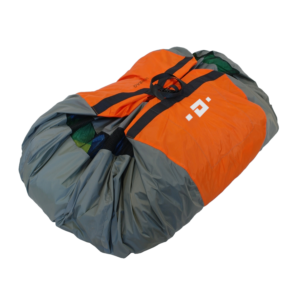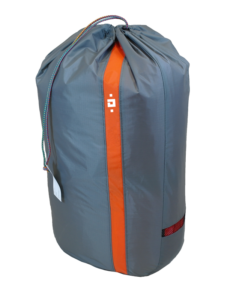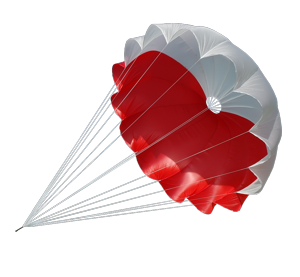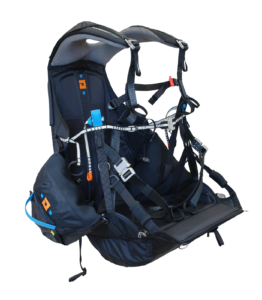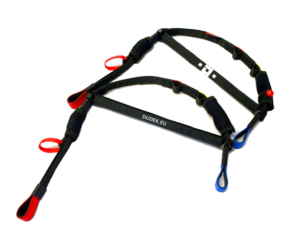Boson
Boson
Boson is a reflex canopy, featuring much speed, lift and agility, dedicated for PPGG (powered trikes) or foot-launched PPG tandems.
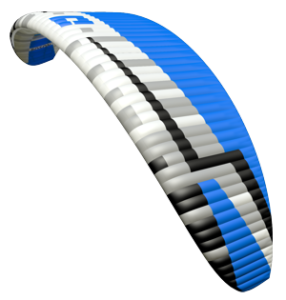
Design and purpose
Boson is a paraglider designed for experienced pilots, flying actively and often, who are well familiar with reflex wings behaviour and have fully mastered flying them.
The recommended minimum is 300 hours paramotor time and at least 50 hours of annual flight time.
It was designed with competing and record hunting in mind. It features considerable speed range, precise handling, and great efficiency.
The reflex traits of the Boson are distinct, nevertheless you can use the speed system at all trimmer settings (themselves having generous range BTW).
 See movie
See movie
Design solutions
Boson was based on our proven and acclaimed Hadron Cabrio. Both the 3D body and planform remain similar, still many design solutions are new, from the length of lines to design of the risers, modified modified accordingly to experiences of the Hadron Cabrio pilots. Among others, the risers have been equipped with a speed system. Suspension lines have been shortened, positively influencing agility and launch behaviour.
When rising, the canopy moves smoothly and shows no tendency to overrun the pilot. The quality of the launch is ensured among else by stiffening the leading edge with elastic rods (FET – Flexi Edge Technology), which also guard it against collapses at high speeeds. The design incorporates other effective ways of load distribution too, related to the newest sewing techniques.
In comparison to Hadron Cabrio, Boson needs less power, easily noticeable in less sink with switched-off engine. Boson does require some attention from the pilot in turbulence, nevertheless remains safe and stable. For the steering comfort, it’s important to precisely adjust the steering lines’ length, accordingly to suspension height of the paramotor or a trike – every inch counts here! Steering system itself consist of our renowned and efficient 2D steering with TCT handles, plus additional TST‘s for the accelerated flight. As standard you can choose between three levels of the steering pulleys and docking magnets. Due to these improvements, operation
of the steering system is intuitive.
Already before its premiere the Boson piloted by Krzysztof Romicki and Wojciech Strzyżakowski as navigator has established a world record over a closed route (FAI triangle) for tandems of 280,41 km.
Boson, as all our paragliders, is manufactured entirely in Europe, in our Polish plant, so that we are able to supervise each step of its sophisticated production process.
Design solutions, technologies and other functionalities are listed below in the Technologies section.
Construction solutions
Technologies, concepts
Risers functionality
Used solutions
Parameters
Weight ranges

TECHNICAL DATA
| Name / size | Boson 31 | Boson 34 |
| Approval – ULM identification | yes | yes |
| Trimmer | yes | yes |
| Speed system | yes | yes |
| Cell number | 60 | 60 |
| Surface flat [m2] | 31 | 34 |
| Surface projected [m2] | 26.73 | 29.32 |
| Wingspan flat [m] | 13.52 | 14.16 |
| Wingspan projected [m] | 11.06 | 11.58 |
| Aspect ratio flat | 5.90 | 5.90 |
| Aspect ratio projected | 4.57 | 4.57 |
| Sink rate [m/s] | min = 1.4 (+/ – 0,3m/s) | |
| Speed* [km/h] | min= 35; trym = 45-65; max = 70 (+/ – 5km/h)* | |
| Lines length (incl. risers) [m] | 8.12 | 8.50 |
| Total lines length [m] | 386.55 | 446.79 |
| Take-off weight** [kg] | 140-260** | 170-300** |
| Max take-off weight – competition*** [kg] | 300*** | 350*** |
| Distance betwen risers [cm] | 60 | 60 |
| Paraglider weight [kg] | 7.62 | 8.20 |
| Lines | A-8000U: 050; 090 / Technora: 90; 140; 190; 280; 340 / Dyneema: 350 | |
| Cloth | Porcher Classic 38 g/m2 / Porcher Everlast 42 g/m2 / Dominico tex 34 g/m2 / Porcher Hard 40g / SR Scrim / SR Laminate 180g | |
* Speeds are given as estimated for the middle wing size and the middle of its weight range. These speeds can vary within +/- 5 km / h depending on the size, take-off weight and additional factors such as air pressure and temperature.
** The basic rule is to choose the size of the wing so that the take-off weight is in the middle of the weight range. Less weight on the wing (lower range take-off weight) can be considered for foot take-off, when flying in calmer conditions, or when we want to improve economy. More experienced pilots who want to fly dynamically, have higher speed and fly in more demanding wind conditions can consider greater wing loading (take-off weight in the upper range). This is a common option among trike users.
*** Note – the canopy significantly changes its behavior with increasing wing loading. The greater the loads, the greater skill and concentration of the pilot are required.





